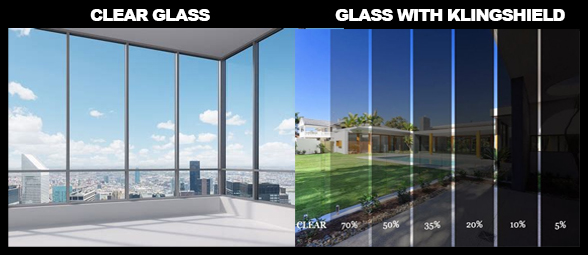Window Film Industry
The Start of Office, Home and Car Window Fims
Windows have always been known as transmitters of light and a provider of a view to the outside. They were never known as a controller of solar energy but in the 70’s lots of changes came into play due to the increases in keeping buildings cool when the cost of power started becoming exhorbitant.
An outcry from building owners called for ways to cut cost in air conditioning and lowering lighting bills, as well as all other methods of insulation which would save money on wasted energy.
Windows were targeted as an energy waster and Engineers started to look at windows in a different light and not only as a means to see through and keep the light coming in and for occupants to keep in touch with the outside world.
They soon realised that window shades, blinds and drapes only created an “illusion” of coolness and slowly started becoming aware that transmission of heat, as well as light from the solar spectrum was possible. These window treatments also blocked out the view and allowed most of the sun’s heat to slowly filter in at the edges, top and bottom and absorb through the window treatments.

Looking for a product that could prevent heat build up while allowing light in, they found the answers in a reflective insulating window covering that could be attached directly onto the glass. This magic product was the answer to their problem with high air conditioning costs, as they could now stop most of the heat from entering the spaces in building with windows. This new system was a balancing product as it increased comfort levels and would have a payback period in energy savings.
Many building owners and Bankers jumped at the opportunity and had this reflective window film installed onto their windows.
A building in Chicago was treated and the John Hancock Centre reported annual energy savings of some $150,000 dollars in the first year by having this reflective window film installed on only the lower floor of a third of the windows in this building. Energy was also saved during winter months as the same reflective product retained the heat that was emitted by the heating system in the building. The whole building was eventually installed with reflective window film. The film to glass combination reduced the summer heat gain by 70%, while lowering the winter heating loss by 40%.
The next commercial building to follow suit was a bank in Delaware, who decided to have all their windows treated with this new magic window reflection film. This exercise proved to be very successful as saving on electricity was $130000 dollars in the first year. This was due to the air conditioning saving in summer as the film prevented the hot rays of the sun from entering the building and the staff reduced the use of the air conditioning, thereby saving the bank money on the electricity accounts.
In winter the film retained the heat from the heating units, which in turn caused the staff to switch of the heating systems, once again creating a saving in electricity bills. This made big news and the rest is history as they say in the classics!
A new industry was born and other advantages emerged as the window film stopped most of the UV light, saving on furnishings being destroyed from fading and deterioration. It was also discovered that the film prevented glass from shattering in the event of the glass being broken.
The beauty of this magic product is that it does not destroy the view when looking out from the inside and also offers privacy when viewed from the outside looking in during daylight. It was like fitting windows with sunglasses. Glare reduction was another added benefit.
Polyester plastic film was the base material used in this reflective window insulation. The reason for it's selection is that it has great strength in it's thin form. It is also an excellent stable, durable and flexible product over a wide range of temperatures and has resistance to moisture. It can withstand repeated flexing without cracking or tearing and deter ageing and is not subject to change. It therefore offers excellent optical clarity, a characteristic required from the new window film treatment product.
In conventional metalizing, a roll of polyester film is placed in a vacuum chamber where the aluminium is vaporized and deposited on to the continuously moving surface of the film. To protect the layer of Aluminium, another layer of film is laminated on top. The addition of mounting adhesive completes the manufacturing process. At a later stage dyed polyester film was added to the manufacturing process to offer coloured window film for aesthetic reasons to enable architects to match up with the different finishing of the exterior of the buildings.
Today window films are very popular on commercial buildings, homes and also on motor car windows to save energy and also create comfortable and balanced interior spaces. Other technical advances have emerged over the years and manufacturing plants are scattered all over the word but the Americans are still leading the pack when it comes to the manufacturing of highly sophisticated window film treatments in various, styles, thicknesses and colours, utilizing different manufacturing techniques.
Today most manufactures belong to an association of Industrial Metallizers Coaters and laminators (AMCAL), to accomplish the goals and standards set by a window film committee, consisting of representation of member companies. This committee has established clear defended standards for measuring and calculation performances of energy saving window films .
